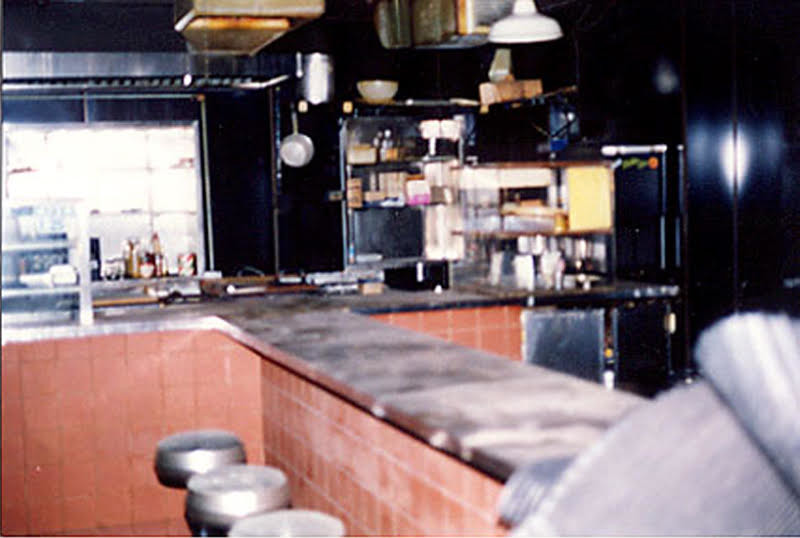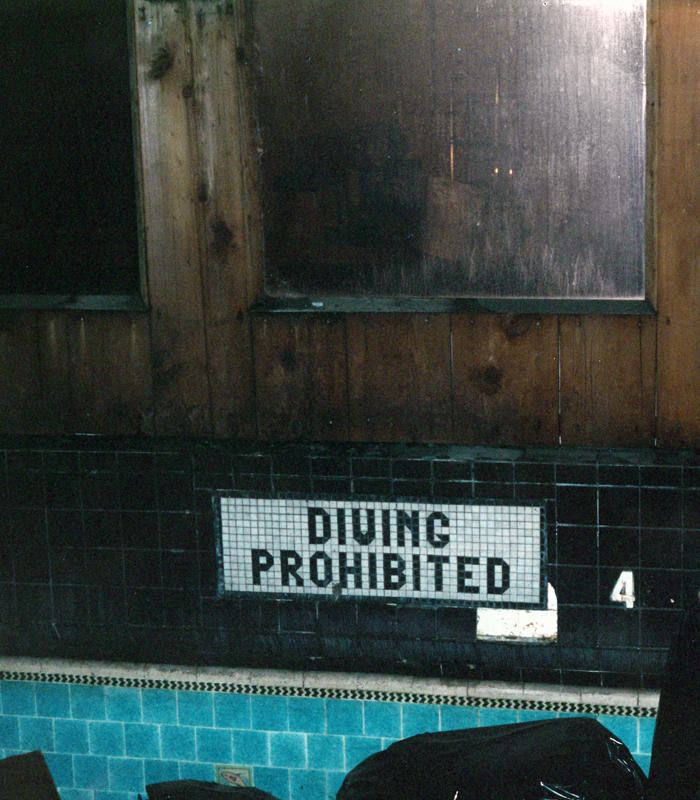
New St. Marks Baths
also known as St. Marks Baths
overview
The New St. Marks Baths was one of the largest and most renowned bathhouses in New York City from 1979 to 1985.
Its owner, Bruce Mailman, became a central figure in the battle against the closure of bathhouses during the early years of the AIDS epidemic.
History
The St. Marks Baths opened c. 1915 to serve the local male immigrant population. By the 1950s, it served the immigrant community by day and gay men by night. In the 1960s, it evolved into an exclusively gay bathhouse that was considered unclean and uninviting.
After the Everard Baths was temporarily closed in 1977 due to a fire, the St. Marks Baths began to attract some of its patrons, but remained rundown and was deemed more a liability than a profitable business. In 1979, entrepreneur and Off-Broadway theater founder Bruce Mailman (1939-1994) purchased the building, hoping to turn around the bathhouse’s reputation and historic allure.
Mailman completely refurbished the interior into a sleek and stylish bathhouse. According to Mailman, the up-to-date design was meant to make patrons feel comfortable signing in under their legal name and not be embarrassed if encountering someone they knew. When it reopened in 1979, Mailman christened it “The New St. Marks Baths” and promoted it as the largest bathhouse in the country. It was open 24 hours a day, seven days a week.
The building facade, with discreet, minimal lettering that read “The New St. Marks” and “Six St. Marks Place” contrasted with its modern, expansive interior. Located on three floors, the refurbished space included an admissions desk behind brass-caged bars (a relic from a former bank), swimming pool, sauna, steam room, hot tub, whirlpool and communal showers, and a barracks-style space for anonymous group sex. The upper floors contained 162 rentable cubicles, each with a platform bed, small table, and amber-tinted wall lamps, to enhance the appearance of patrons. It also included a cafe, where Vito Russo once worked. Keith Haring was also a regular attendee. Admission was originally $7 for a locker rental (of which there were about 250) and $12 for a cubicle rental.
Given its glossy new interior and convenient location, the Baths boomed in popularity, predominantly with a white, middle- and upper-class gay male clientele. It served as a convenient stop for weary-eyed dancers after a night at nearby clubs like Flamingo or 12 West. In 1980, Mailman opened his own gay club, The Saint, whose name was inspired by the Baths, just a five-minute walk from each other. Despite the popularity of the Saint, the Baths were more profitable and served as the backbone of Mailman’s business operations.
In 1981, he expressed interest in purchasing 8 St. Mark’s Place, the building next to the Baths, eager to expand the facilities by combining the two structures. These plans did not come to fruition as word of a mysterious “gay cancer” began spreading in the city. By 1982, patrons of both of Mailman’s establishments were becoming ill with what is now known as HIV, the virus that causes AIDS. As more information about transmission became known, many felt that spaces like the Baths encouraged unsafe sex and contributed to the spread of HIV. By 1983, public and private pressure mounted for Mailman to close the Baths, and when members of his staff advised him to shut it down, he fired them.
To address the epidemic, the Baths started requiring customers to sign safe-sex pledges, provided sexual health pamphlets, and gave out condoms in envelopes that read “This Could Save Your Life.” Mailman vocally opposed calls to close the city’s bathhouses, arguing that they were essential for safe-sex education and closing them would not stop individuals from engaging in unsafe practices elsewhere. Mailman’s arguments were for naught, and the New York City Health Department ordered the closure of all bathhouses in 1985.
They didn’t close The Baths until December of 1985…He didn’t want to close it. The community didn’t want to close it. The clients didn’t want it to close…When they came to close the Baths down, there was no lock for the door. The Baths had never been shut since the day it opened.
When the Baths closed on December 7, 1985, Mailman’s primary source of income was gone and the space remained vacant. In an attempt to make The Saint profitable, he opened the club to straight patrons on Fridays and continued operating it until May 1988, when it closed due to the loss of its core audience of white, gay men.
Mailman spent years fighting to reopen the Baths in court, arguing that its closure constituted an invasion of patrons’ right to privacy and freedom of association. He died on June 9, 1994, from complications related to AIDS, at the age of 55. Shortly after his death, the building was sold to a video chain store.
Entry by Marc Zinaman, project volunteer, and Ken Lustbader, project director (October 2021).
NOTE: Names above in bold indicate LGBT people.
Building Information
- Architect or Builder: Jacob Fischer
- Year Built: 1914; 1916 alteration to extend front and add arches
Sources
Ada Calhoun, St. Marks is Dead: The Many Lives of America’s Hippest Street (New York: W.W. Norton, 2016).
“Bruce Mailman, 55, Owner of Businesses In the East Village,” The New York Times, June 12, 1994, nyti.ms/3433mbq.
City of New York v New St. Mark’s Baths, 130 Misc. 2d 911, 497 N.Y.S.2d 979 (1986).
Daniel Hurewitz, Stepping Out: Nine Walks Through New York City’s Gay and Lesbian Past (New York: Henry Holt & Co., 1997).
George Chauncey, Gay New York: Gender, Urban Culture, and the Making of the Gay Male World, 1890-1940 (New York: Basic Books, 1994).
Ira Tattelman, “Speaking to the Gay Bathhouse: Communicating in Sexually Charged Spaces” in Public Sex, Gay Space, edited by William L. Leap (New York: Columbia University Press, 1999), 71-94.
Jerry Schwartz, “Bathhouse Issue Difficult for Gay Community,” AP News, November 1, 1985, bit.ly/3nqz3qa.
Joyce Purnick, “City Shuts a Bathhouse As Site of ‘Unsafe Sex’,” The New York Times, December 7, 1985, nyti.ms/3b7nq1e.
O’Patrick Wilson, “St. Mark’s Bathhouse Tries to Play it Safe,” Columbia Daily Spectator, October 17 1985, bit.ly/3GfGqck.
Patrick Moore, Beyond Shame: Reclaiming The Abandoned History Of Radical Gay Sexuality (Boston: Beacon Press Books, 2004).
SteveWarRan, “Legendary Bathhouses of New York City, August 16, 2014, accessed September 30, 2021, bit.ly/3Bbpcch.
Tim Lawrence, Life and Death on the New York Dance Floor, 1980-1983 (Durham: Duke University Press, 2016).
William J. Woods, Diane Binson, ed., Gay Bathhouses and Public Health Policy (New York: Routledge, 2012).
Do you have more information about this site?
This project is enriched by your participation! Do you have your own images of this site? Or a story to share? Would you like to suggest a different historic site?













